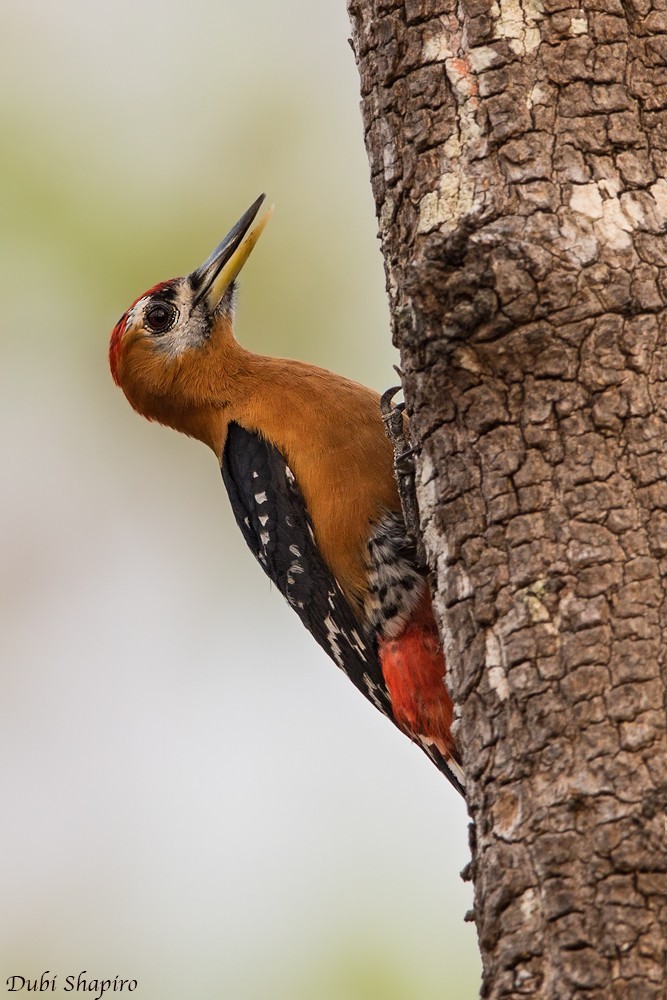Rufous-bellied Woodpecker
A species of Hypopicus Scientific name : Dendrocopos hyperythrus Genus : Hypopicus
Rufous-bellied Woodpecker, A species of Hypopicus
Botanical name: Dendrocopos hyperythrus
Genus: Hypopicus
Content
Description General Info
 Photo By Dubi Shapiro
Photo By Dubi Shapiro Description
The rufous-bellied woodpecker ranges in length from about 19 to 23 cm (7.5 to 9.1 in). The male has a red crown while the female has a black crown, speckled with white. Both sexes have a black mantle and back, while the wings are black barred with white. The upper tail is black, with some white barring on the outer two pairs of feathers. The face is white and the throat and underparts are a uniform cinnamon or rufous. The lower belly is black barred with white and the under-tail converts are red or pink. The iris is chestnut, the upper mandible of the beak is black and the lower mandible grey, and the legs are grey or olive. 
Size
25 cm
Nest Placement
Cavity
Feeding Habits
Rufous-bellied Woodpecker's diet mainly consists of insects, especially ants, which make up over 60% of its intake, along with beetles, grasshoppers, moths, and caterpillars. It feeds on sap in spring, creating sap wells in trees. Typically forages alone, sometimes joining small bird flocks outside breeding season. It probes, hammers, and gleans on tree trunks and occasionally catches insects mid-flight.
Habitat
Rufous-bellied Woodpecker typically resides in a variety of forest habitats including broadleaved, mixed, and coniferous forests. This species is adapted to a range of forested environments from deciduous to evergreen, including montane and cloud forests. It favors areas abundant with tree species such as Himalayan poplar, false dogwood, oak, chestnut, silver fir, pine, and rhododendron. Rufous-bellied Woodpecker can also be found in regions with oak, alder, and dry dipterocarp trees, extending to open woodlands throughout broader Southeast Asia.
Dite type
Insectivorous
General Info
Feeding Habits
Bird food type
Species Status
The rufous-bellied woodpecker has a wide range but is generally an uncommon bird. It has disappeared from part of its former range because of the clearing of the deciduous forest necessary for its survival. The population trend is thought to be downwards, but the International Union for Conservation of Nature has assessed its conservation status as being of "least concern". 

 Photo By Dubi Shapiro
Photo By Dubi Shapiro